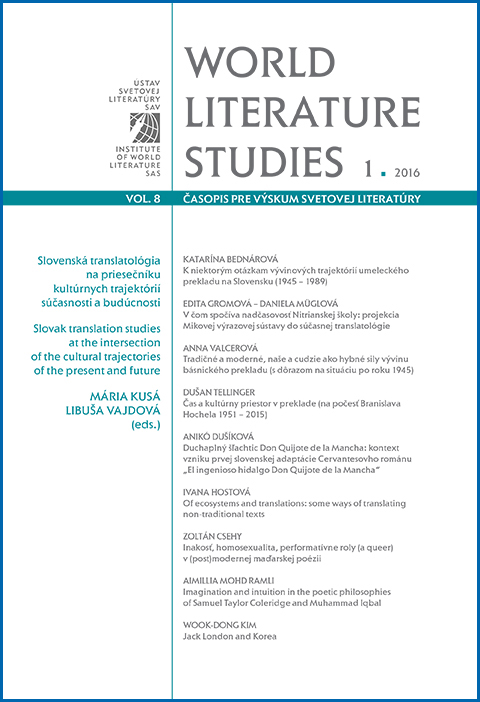Čas a kultúrny priestor v preklade (na počesť Branislava Hochela 1951 – 2015)
Time and cultural space in translation (in honour of Branislav Hochel 1951 – 2015)
Author(s): Dušan TellingerSubject(s): Language and Literature Studies
Published by: Ústav svetovej literatúry, Slovenská akadémia vied
Keywords: Cultural time-space; Translation strategy; Foreignization vs domestication
Summary/Abstract: This special issue on time and cultural space in translation is significant for practice, and equally important for its theoretical aspect. Both time and space are universal constraints and have integral roles in every literary translation because in every literary text no action can exist separate from the constraints of time and space (the primary procedures of translation across time and both cultural and geographic space are historizing versus modernizing). These two basic types of translation strategy (foreignization and domestication) are important from the viewpoint of the identity and historical cultural accuracy of translated literature. Foreignization highlights the foreign culture and prevents it from being absorbed by the target culture. Foreignization emphasizes the foreignness of the foreign text and can be achieved if translators use the transference of source language cultural words, proper names and connotations. A domestification principle used throughout our long history is that translators adapt or delete foreign components of a text, above all references to reality, allusions and connotative words. Translation is primarily a time- and space-bound process, so it is inevitable that translation studies will research how the transposition of an original text occurs into a foreign cultural “time-space”.
Journal: World Literature Studies
- Issue Year: VIII/2016
- Issue No: 1
- Page Range: 49-60
- Page Count: 12
- Language: Slovak

